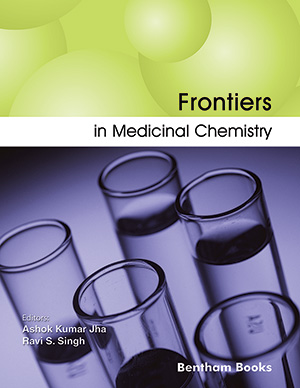Abstract
Host intracellular iron has been recognized as an important cofactor in induction of nicotinamide adenine dinucleotide phosphate (NADPH)-dependent oxidative burst as antimicrobial defense mechanism. It is plausible that iron chelator directly inactivates NADPH oxidase by chelating the active site heme iron of flavocytochrome b558 thus blocking the transfer of electrons from NADPH to oxygen and its reduction to superoxide anion. Thus, altering the equilibrium of intracellular iron could influence the course of infection to the enhancement of the pathogen with regard to oxidative stress.
Keywords: Helicobacter pylori, NADPH, iron, free radicals, nicotinamide adenine dinucleotide phosphate, heme iron, flavocytochrome b558, iron chelator, gastritis appears, neutrophils, macrophages, Chronic gastritis, immunoglobulin-secreting plasma cells, reactive oxygen species, superoxide dismutase, Phagocytic leukocytes, Nox, NADPH-dependent oxidative burst, chemoattractants, chemokines, Phagocytic cytochrome b558, desferrioxamine, neutrophil-activating protein, monocyte-dependent fashion, mononuclear cell depletion, Ficoll-purified neutrophils, pentose phosphate pathway, nonoxidative pentose pathway, glucose-6-phosphate dehydrogenase, glutathione, glutathione metabolism, hydrogen peroxide, hepatocytes, hypoferremia, peptide hormone hepcidin, duodenal enterocytes, iron-recycling macrophages, iron-storing hepatocytes, erythropoiesis, ironbinding molecules, siderophores, Haber-Weiss reaction, iron deficiency anemia
Mini-Reviews in Medicinal Chemistry
Title: NADPH and Iron May Have an Important Role in Attenuated Mucosal Defense in Helicobacter pylori Infection?
Volume: 10 Issue: 14
Author(s): J. Dovhanj, K. Kljaic, M. Smolic and D. Svagelj
Affiliation:
Keywords: Helicobacter pylori, NADPH, iron, free radicals, nicotinamide adenine dinucleotide phosphate, heme iron, flavocytochrome b558, iron chelator, gastritis appears, neutrophils, macrophages, Chronic gastritis, immunoglobulin-secreting plasma cells, reactive oxygen species, superoxide dismutase, Phagocytic leukocytes, Nox, NADPH-dependent oxidative burst, chemoattractants, chemokines, Phagocytic cytochrome b558, desferrioxamine, neutrophil-activating protein, monocyte-dependent fashion, mononuclear cell depletion, Ficoll-purified neutrophils, pentose phosphate pathway, nonoxidative pentose pathway, glucose-6-phosphate dehydrogenase, glutathione, glutathione metabolism, hydrogen peroxide, hepatocytes, hypoferremia, peptide hormone hepcidin, duodenal enterocytes, iron-recycling macrophages, iron-storing hepatocytes, erythropoiesis, ironbinding molecules, siderophores, Haber-Weiss reaction, iron deficiency anemia
Abstract: Host intracellular iron has been recognized as an important cofactor in induction of nicotinamide adenine dinucleotide phosphate (NADPH)-dependent oxidative burst as antimicrobial defense mechanism. It is plausible that iron chelator directly inactivates NADPH oxidase by chelating the active site heme iron of flavocytochrome b558 thus blocking the transfer of electrons from NADPH to oxygen and its reduction to superoxide anion. Thus, altering the equilibrium of intracellular iron could influence the course of infection to the enhancement of the pathogen with regard to oxidative stress.
Export Options
About this article
Cite this article as:
Dovhanj J., Kljaic K., Smolic M. and Svagelj D., NADPH and Iron May Have an Important Role in Attenuated Mucosal Defense in Helicobacter pylori Infection?, Mini-Reviews in Medicinal Chemistry 2010; 10 (14) . https://dx.doi.org/10.2174/138955710793564160
| DOI https://dx.doi.org/10.2174/138955710793564160 |
Print ISSN 1389-5575 |
| Publisher Name Bentham Science Publisher |
Online ISSN 1875-5607 |
Call for Papers in Thematic Issues
Bioprospecting of Natural Products as Sources of New Multitarget Therapies
According to the Convention on Biological Diversity, bioprospecting is the exploration of biodiversity and indigenous knowledge to develop commercially valuable products for pharmaceutical and other applications. Bioprospecting involves searching for useful organic compounds in plants, fungi, marine organisms, and microorganisms. Natural products traditionally constituted the primary source of more than ...read more
Computational Frontiers in Medicinal Chemistry
The thematic issue "Computational Frontiers in Medicinal Chemistry" provides a robust platform for delving into state-of-the-art computational methodologies and technologies that significantly propel advancements in medicinal chemistry. This edition seeks to amalgamate top-tier reviews spotlighting the latest trends and breakthroughs in the fusion of computational approaches, including artificial intelligence (AI) ...read more
Natural Products and Dietary Supplements in Alleviation of Metabolic, Cardiovascular, and Neurological Disorders
Metabolic disorders like diabetes, obesity, inflammation, oxidative stress, cancer etc, cardiovascular disorders like angina, myocardial infarction, congestive heart failure etc as well as neurological disorders like Alzheimer?s, Parkinson?s, Epilepsy, Depression, etc are the global burden. They covered the major segment of the diseases and disorders from which the human community ...read more
Natural Products in Drug Discovery
Natural products have always been one of the important ways of drug discovery due to their novel skeleton and diverse functional group characteristics. According to statistics, between 1981 and 2019, the FDA approved a total of 1,394 small molecule drugs for marketing, of which 930 marketed drugs originated from the ...read more
 7
7
- Author Guidelines
- Graphical Abstracts
- Fabricating and Stating False Information
- Research Misconduct
- Post Publication Discussions and Corrections
- Publishing Ethics and Rectitude
- Increase Visibility of Your Article
- Archiving Policies
- Peer Review Workflow
- Order Your Article Before Print
- Promote Your Article
- Manuscript Transfer Facility
- Editorial Policies
- Allegations from Whistleblowers
Related Articles
-
Effectiveness of Resveratrol Against Cardiovascular Disease
Mini-Reviews in Organic Chemistry Artemisia Species as a New Candidate for Diabetes Therapy: A Comprehensive Review
Current Molecular Medicine In Vivo Imaging of the Diseased Nervous System: An Update
Current Pharmaceutical Design Stem Cells Treatment for Wilson Disease
Current Stem Cell Research & Therapy Renal Allograft Thrombosis
Current Pediatric Reviews Thymoquinone: Major Molecular Targets, Prominent Pharmacological Actions and Drug Delivery Concerns
Current Bioactive Compounds Temozolomide: An Update on Pharmacological Strategies to Increase its Antitumour Activity
Medicinal Chemistry Reviews - Online (Discontinued) New Glycoside Esters from the Aerial Parts of Artemisia absinthium Linn.
The Natural Products Journal Carotid Endarterectomy and Carotid Artery Stenting Lead to Improved Cognitive Performance in Patients with Severe Carotid Artery Stenosis
Current Neurovascular Research ACE2 and Diabetic Complications
Current Pharmaceutical Design The role of NADPH Oxidase in Vascular Disease – Hypertension, Atherosclerosis & Stroke
Current Pharmaceutical Design Endogenous Agmatine Inhibits Cerebral Vascular Matrix Metalloproteinases Expression by Regulating Activating Transcription Factor 3 and Endothelial Nitric Oxide Synthesis
Current Neurovascular Research Diagnostic and Therapeutic Patents and Patent Applications on Biomarkers for Acute Kidney Injury
Recent Patents on Biomarkers The Role of Dietary Compounds in the Therapy of Nicotine-Induced Osteoporosis
Current Drug Targets Curcumin Alleviates Cerebral Ischemia-reperfusion Injury by Inhibiting NLRP1-dependent Neuronal Pyroptosis
Current Neurovascular Research Novel Drug Targets for the Treatment of Cardiac Diseases
Current Pharmacogenomics and Personalized Medicine Peroxisome Proliferator-Activated Receptor-γ (PPAR-γ) Ligands: Novel Pharmacological Agents in the Treatment of Ischemia Reperfusion Injury
Current Molecular Medicine Diverse Functions and Mechanisms of Pericytes in Ischemic Stroke
Current Neuropharmacology Resveratrol and Cancer Treatment: Is Hormesis a Yet Unsolved Matter?
Current Pharmaceutical Design Sex Differences in Biomarkers for Predicting Cardiovascular and Coronary Events
Current Vascular Pharmacology























